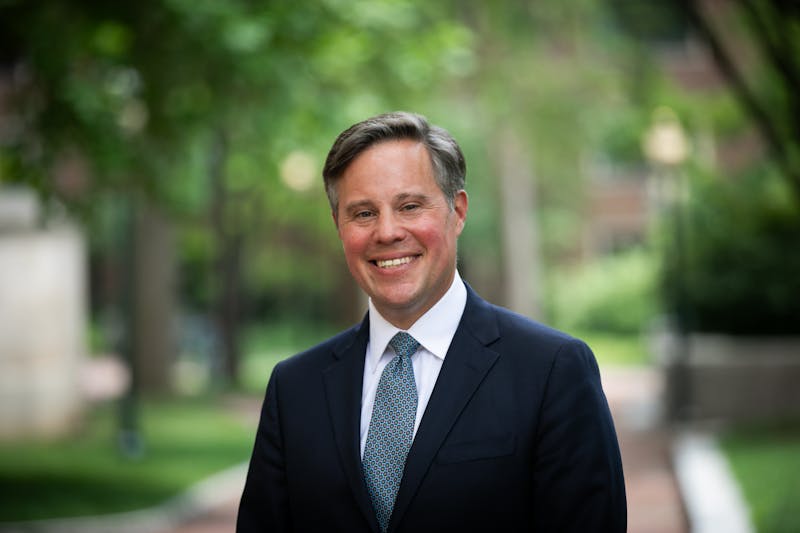
Penn Marriage Pact, an online matchmaking service that uses a questionnaire and algorithm to pair students, returned to Penn for its fifth year.
The Marriage Pact survey opened on Oct. 7 and closed on Oct. 14 at 5 p.m. Within that time, a total of 4,935 students, representing more than 45% of Penn’s undergraduate population, filled out the Marriage Pact — an increase from the 4,135 participants last year.
This year’s Penn Marriage Pact was organized by a team of four Penn students working with two students from Stanford University.
The Penn student serving as a project manager for this year’s Marriage Pact — who spoke on the condition of anonymity due to the nature of the survey — said that because the matchmaking service does not utilize social media or other forms of traditional marketing, it was difficult to make sure the survey reached all corners of Penn’s student body.
“Marriage Pact is interesting, where the crux of its marketing concept is word-of-mouth and anti-social media,” the project manager said. “Unlike a few years ago, PMP wasn’t shared through class board listservs, so it was difficult gauging if some students knew that it was happening if their friends didn’t mention it to them. The team tried as best we could but, of course, some students might have fallen through.”
The student said that the majority of the survey’s questions were created at the Marriage Pact headquarters at Stanford University, where Marriage Pact was first founded in 2017. However, a few questions about ambition and activism were chosen for Penn specifically by the Penn Marriage Pact team.
Although the questionnaire was originally slated to close on Oct. 13, the deadline was pushed back one day to encourage students to continue sharing the Marriage Pact survey. According to an email sent out to Marriage Pact participants, this choice was made to address the “lopsided” matching pool. Similar to past years, more heterosexual women signed up than bisexual or straight men, with 474 more heterosexual women than men participating this year.
As a result of the imbalance in groups who participated in the Marriage Pact, some students received platonic friend matches rather than romantic ones — or they didn’t get matched at all.
“There’s always an issue about getting more straight or bi guys to fill out PMP," the project manager said. “It’s hard reaching groups that may see PMP as ‘stupid’ or ‘embarrassing,’ but I think, at the end of the day, we’re all searching for connection — romantic or not — during our four years here.”
For some students, like Engineering first year Kevin Obando, the Marriage Pact did not result in any new connections because they were already friends with their matches.
“I was matched with a friend,” Obando said. “It’s probably fair, because it means I get along with my friends, so I didn’t really mind. But still, I feel like I kind of missed out.”
Some students chose not to meet up or reach out to their matches. College first year Orchie Hasan emphasized that it was unlikely for the Marriage Pact to spark genuine connection amidst the hook-up and hustle culture that dominates Penn’s social scene.
“I think Penn Marriage Pact’s system works well, it’s just that romance is dead, so that’s why it doesn’t work,” Hasan said. “At Penn specifically, with the culture and everything, it’s especially dead. People don’t have time for a relationship. With PMP, it’s your one opportunity to get to know someone that’s gonna fit you well, and people are scared of that, so they ghost each other.”
The Penn Marriage Pact’s organizers shared a more optimistic outlook on the Marriage Pact’s role on campus.
“That’s what college is for: finding people and communities that make Penn feel like home,” the project manager said. “PMP is just a small way of knowing that you’re not alone in what you believe in — the marriage pact part of it is just a plus.”
The Daily Pennsylvanian is an independent, student-run newspaper. Please consider making a donation to support the coverage that shapes the University. Your generosity ensures a future of strong journalism at Penn.
Donate






